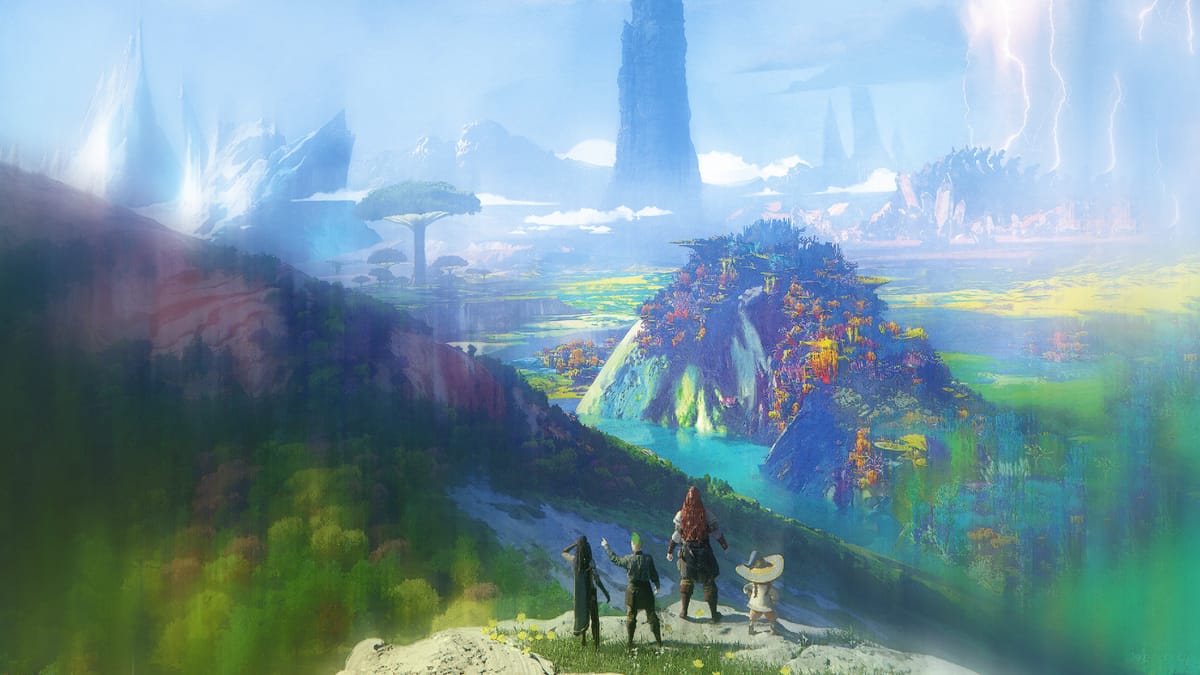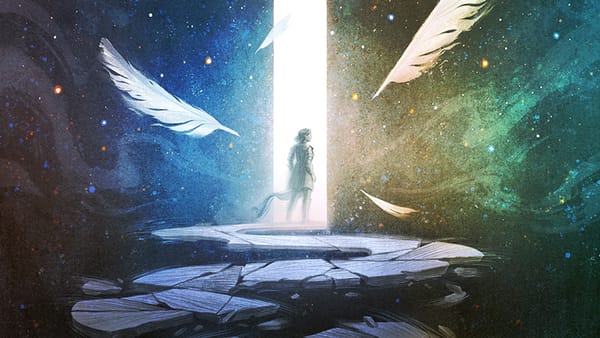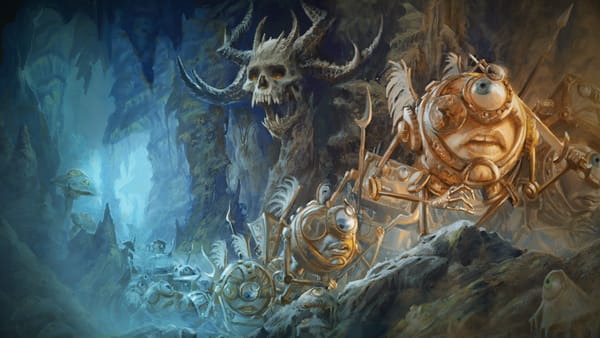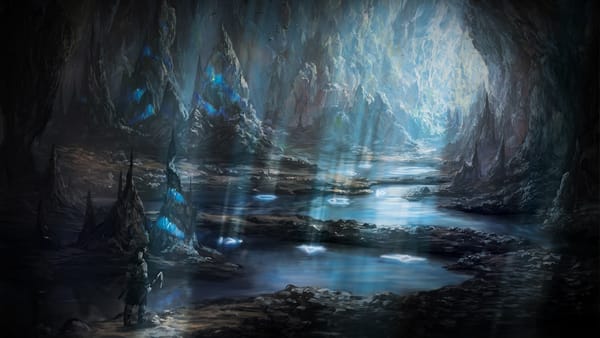Part 2: The Mosaic Mimir
As we dive into Part Two of Turn of Fortune’s Wheel, let’s refocus on the core goals shaping this remix: weaving self-discovery into the characters’ motivations, uniting the story elements under the mystery of the glitch, and heightening the stakes by creating a multiversal threat.

This Planescape: Turn of Fortune’s Wheel remix began with clearly stated goals of how I want this adventure to play out. Those principles will guide our adjustments as the adventure transitions from Sigil’s intrigue to the Outlands’ expansive sandbox.
So where are we on this front?
- We’ve rewritten the backstory so that the characters have a deeper mystery about themselves to uncover. We’ve also seeded the opening with clues so that there is a launching off point once the characters emerge in Sigil.
- We’ve restructured Part One, and created an adventure arc that ties the characters to events in Sigil and the Outlands. The new scenarios introduce NPCs and leads that provide direction and a feeling that big things are happening because of their actions.
- Part of the arc in Sigil provides glimpses of the fiendish activity at the heart of the adventure, but as we head into Part Two the who and why of that thread is still hidden.
The adventure so far revolves around the characters and their need to solve the multiversal glitch. Every scenario they’ve experienced now stems from that central enigma. Our homework in Part Two is to up the stakes and reveal the threat to the multiverse.
Playing in the Outlands Sandbox
We created a sandbox with a funnel in Part One in order to open Sigil up to the characters and make their exploration matter. Part Two is where the adventure as written delivers on the sandbox experience. The characters get to choose which gate towns to visit and have agency in the adventure.
There’s no need to change the overall structure here, but we do want to avoid the Outlands exploration feeling scattered or aimless. What will help this section is emphasizing player agency while maintaining the momentum of finding R04M and fully uncovering Shemeshka’s schemes. By strengthening hooks and refining the flow between gate towns, we will make the sandbox feel alive with player-driven impact.
Connecting Gate Towns to the Multiversal Threat
In Sigil the characters investigated their involvement in the weapons trading scheme. They uncovered clues that point them to the Outlands by exploring the Cuckoo’s Corner, the Frostfell Cache, or by conversing with Velios in Undersigil.
To get the characters invested I’ve provided a framework of character archetypes that allows us to fit a dynamic party into Shemeshka’s scheme. We’ll use that framework to build out the rest of the scheme and connect the characters to the gate towns.
By seeding each gate town with clues tied to R04M or Shemeshka’s scheme, players remain tethered to the overarching narrative. For instance, a lead in Glorium might hint at fiendish meddling that connects back to Automata’s corrupted celestial weapons. As they uncover their involvement, the characters face moral choices that could redefine their paths or cement their roles in the conflict.
The Fixer. This charismatic negotiator that dealt with Spiral Hal’oight pulled many strings across the Outlands.
- Curst. They compelled Valder to work for them and help break fiends out of Carceri.
- Faunel. They negotiated with Mick and the Vile Hunt and provided them with the modified celestial weapons.
- Sylvania. They used their charm to incite chaos here.
The Arcanist. Adept at all things arcane, they sowed the seeds of corruption in the Outlands and beyond.
- Excelsior. They worked with Sincerity and Uncle Longteeth to ensnare souls in the iron flasks.
- Glorium. They seeded the fiendish influence that sparked violence here.
- Rigus. They bound the slaad that replaced Sergeant Luggik.
The Procurer. They were instrumental in getting the weapons smuggling scheme going in the first place, which included some dirty work in the Outlands.
- Automata. They worked out a deal with Beltha that allowed the corrupted celestial weapons to spread across the Outlands.
- Excelsior. They set up the initial celestial weapon skimming with Changle.
- Glorium. They arranged celestial weapons deliveries to Grakenok and Glorium.
The Smuggler. This resourceful scoundrel moved fiends across the Outlands via the Planar Trade Consortium.
- Curst. They worked with Valder to smuggle fiends out of Carceri.
- Faunel. They sent Mick and his crew to Faunel after breaking him out of Curst and gave the Vile Hunt intel on the various tribes.
- Rigus. They got the slaad into Rigus once they were out of Curst and sparked the invasion from Acheron.
Consider these suggestions for how to assign different roles and ties. They are not absolute or critical to the success of this rewrite. The most important point is that these ties fit the characters’ motivations and backstories and help tell the story of who they are.
With the groundwork laid, the characters are ready for a dynamic encounter at the walking castle.



